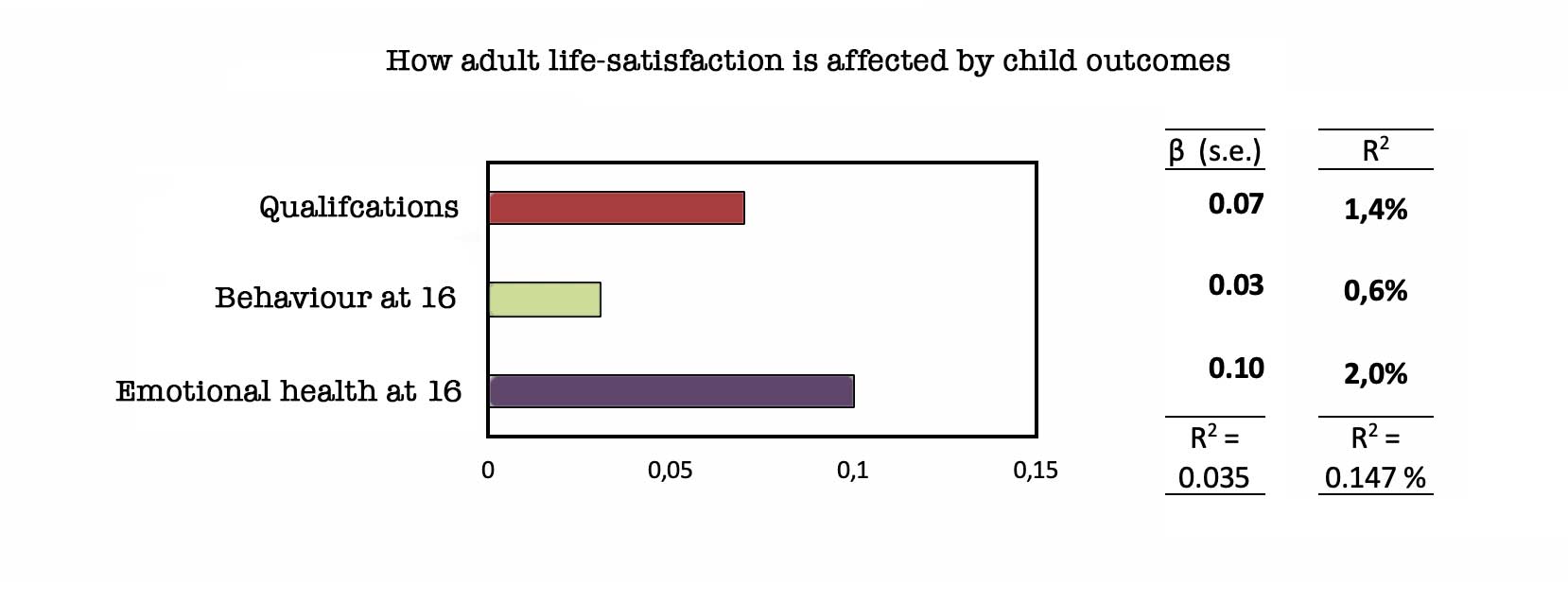Childhood has a magical dimension, but enchantment can turn into black magic. This unhealthy atmosphere has an impact on the emotional development of future adults, as neuroscience and psychiatry have already shown. In contrast, a healthy environment fosters resilience and helps people to face difficulties in life. But what really makes childhood a fairy-tale?
The book “The origins of happiness” examines the life-satisfaction of individuals from birth to adulthood by asking them what makes them happy now and in the past. Which aspects of their childhood matter most, schooling, the family income or the parents’ education? The answer to this question can inform public decision-making if governments are willing to emphasize well-being and not just Gross Domestic Product (GDP).

The authors use two surveys: a very detailed cohort study on the majority of children born in Bristol and Bath between April 1991 and December 1992 and the British Cohort Study 1 on more than 10 000 individuals from birth (1970) in the United Kingdom. These data include income, parents’ health and work, family conflicts, schooling. They focus on three characteristics at age 5, 11 and 16: cognitive capacities or qualifications, behaviour, and emotional health 2.

After identifying what makes people happier, the economists ask which family circumstances help people reach happiness. Emotional health is one of the most important criteria for adults, coming well before income. But what matters for children?
Qualifications do not affect happiness but impact income and work. Behaviour at age 16 is a good predictor of future social relationships and partnerships. However, the best predictor of happiness is children’s emotional health.
Fairy tales and monsters
When childhood is on the stage, mothers play the main role. Their emotional health affects their children’s happiness. If they feel sad, their child’s smile fades, as if they were on two ends of the same thread; and this hits girls even more than boys. Cringes and laughs intertwine, feelings and behaviours begin to break down.

By regressing adult life-satisfaction on each characteristic (income, qualifications, etc.), the authors obtain coefficients. Variables are standardized (by subtracting the sample’s average and by dividing them by their standard deviation) to enable comparison of the different coefficients. This makes it possible to assess the impact of each characteristic on well-being inequalities, by squaring each coefficient. For instance, 2.5 (=0.16*0.16)% of total inequalities observed in emotional health at 16 are explained by the mother’s emotional health.
Still, well-being does not depend on mothers alone. Social functioning remains gender- orientated, and fathers’ behaviour weighs differently on their children. While the father’s mental health has not so far been found to matter, the father’s unemployment directly affects children’s happiness, coming after family income, whereas the mother’s unemployment is not significant.

Threatening universe or caring universe?
Attachment theory explains how the different patterns of caring shape the emotional development of a child. Caring parents give their children a secure and safe environment. We commonly consider mothers the main figure of attachment, but other people can play this role.
In the secure attachment, children can rely on their caregivers and there are balanced relationships, without over-dependence or lack of dependence. One-year babies assessed with secure attachment are more active and enthusiastic in their exploration activities3.
Family backgrounds are not always idyllic. In the anxious-avoidant attachment4, the child lacks the caregiver’s attention and has to face stressful situations alone. In the anxious-ambivalent attachment, parental reactions are quite contradictory, switching from hypervigilance to negligence. A third dysfunctional attachment observed by psychologists is when the adult confuses roles and makes communication errors.
If the relationship is affected, because of mental illness for instance, emotional development is affected and life-satisfaction too. That’s why mental health, particularly that of the mother, should be targeted by public policies, especially since the consequences are long-lasting and affect life-satisfaction in adulthood.
Like mother, like daughter
According to new discoveries in epigenetics, gene expression activates or disactivates depending on the environment. Traumas can also be bequeathed to future generations. Factors examined by the authors, such as way of life, social background or trauma, can generate genetic changes in progeny.

Mental illness is likely to be transmitted from one generation to another. Even in the mother’s womb, studies show that the foetus’ brain is affected by her emotional state and the impact remains significant afterwards. Thus, dissatisfied people often had an unstable mother, and are more prone to depression or anxiety.
Protecting psychological health is becoming a priority for children as well as mothers, so these findings should encourage decision-makers to develop appropriate public policies. While fighting poverty and enhancing education, employment or physical health are important, the fight against mental illness should be an additional goal for governments. Early prevention could safeguard children from the damaging effects of their mothers’ mental illness and thus reduce public spending on cures.
Sarah Flèche et Claire Lapique
Photos : Ben White, Camilla Quintero Franco, Jenna Norman and Mi Pham on Unsplash
Référence : Clark, A E, S Flèche, R Layard, N Powdthavee and G Ward, février 2018, The Origins of Happiness, Princeton University Press
- 1. Avon Longitudinal Study of Parents and Children (ALSPAC)
- 2. To assess cognitives capacities, the authors use GCSE scores ; to assess behaviour, they use both the answers from one study ‘s 17 questions put to mothers (about relationships with others, hyperactivity, attentiveness, emotion management) and the other study’s 22 questions put to children and 8 to mothers about mood and feelings.
- 3. https://apprendreaeduquer.fr/la-theorie-de-lattachement-les-3-types-atta...
- 4. Identified in the 1960s by the psychologist Mary Ainsworth







